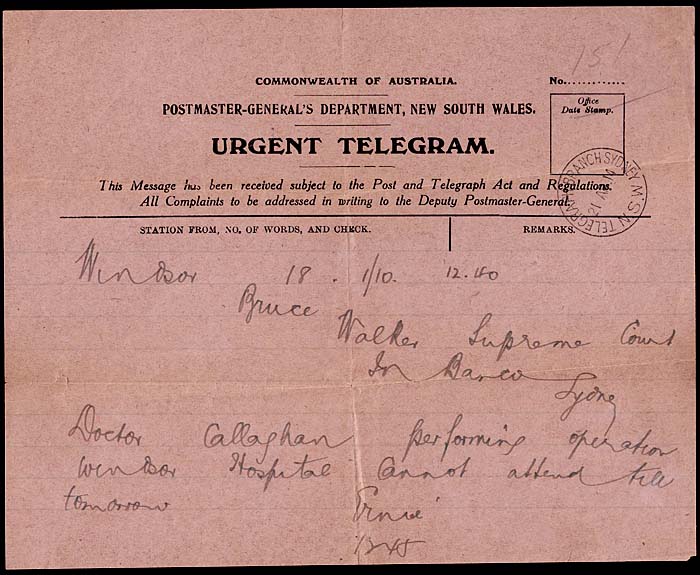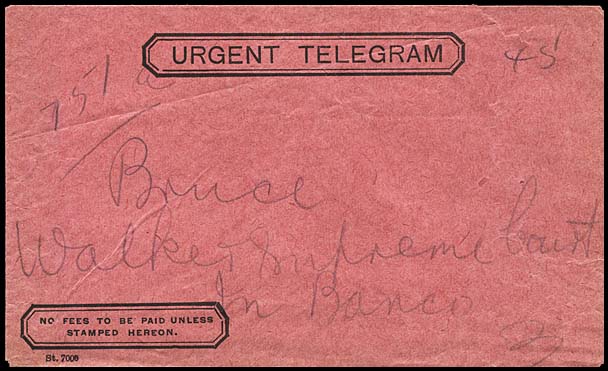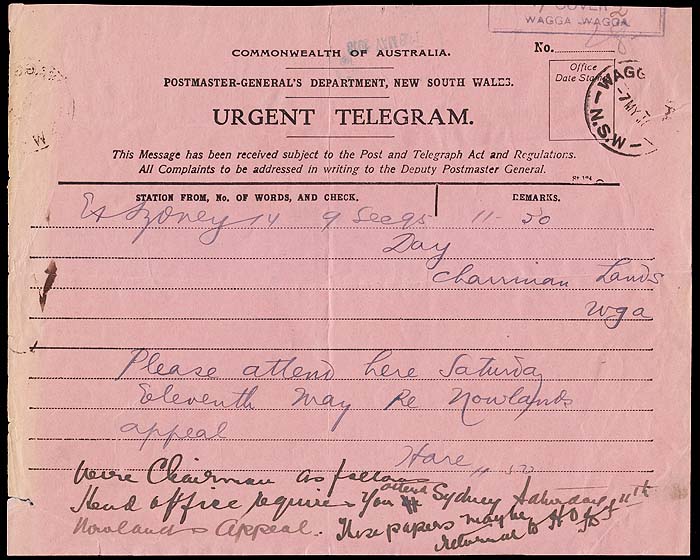New South Wales - interim period: 1901-1917.
Urgent rate delivery form: NI-DU-6.
Urgent rate delivery form: NI-DU-6.
- Home, index, site details
- Australia 1901-1988
-
New South Wales
- Overview of NSW
- Organisation
- Telegraph lines
- Telegraph Offices
- Date stamps
- Forms
- Envelopes
- Rates
- Stamps
-
Queensland
- Overview of Qld
- Telegraph lines
- Telegraph Offices
- Date stamps
- Forms
- Envelopes
- Rates
- Stamps
- Ephemera
-
South Australia
- Overview of SA
- Organisation
- Telegraph lines
- Telegraph offices
- Date stamps
- Forms
- Envelopes
- Rates
- Stamps
-
Tasmania
- Overview of Tasmania
- Organisation
- Telegraph lines
- Telegraph Offices
- Date stamps
- Forms
- Envelopes
- Railway lines
- Rates
- Stamps
-
Victoria
- Overview of Victoria
- Organisation
- Telegraph lines
- Telegraph Offices
- Date stamps
- Forms
- Envelopes
- Rates
- Stamps
- Ephemera
-
Western Australia
- Overview of WA
- Organisation
- Telegraph lines
- Telegraph offices
- Date stamps
- Forms
- Envelopes
- Rates
- Stamps
- International
- Special aspects
General characteristics:
| Heading and notes: | Standard two line heading above URGENT TELEGRAM in smaller letters than previously. |
| Message area: | 9 lines - faint and continuous on type A & B, dotted black lines on type C. |
| Reverse side: | Blank. |
| Colours (text & form): | Black on dark pink with shades to bright pink. |
| Size of form overall: | 170 × 209 mm. |
| Size of datestamp box: | Varies across types. |
Distinctive characteristics of this form:
- smaller Date Stamp box with two lines of text;
- message area has no boxes and occupies 65% of form;
- has two line "This message..." under heading which is in turn separated from "Station from..." by a black line;
- the two line "This message..." is in italics;
- the main distinctions among the three varieties are:
6A: has Form No. 144 above the date stamp box;
6B: has no Stock number above REMARKS and the legs of the M of TELEGRAM are splayed;
6C: has a Stock number at the right above the major line and the legs of M of TELEGRAM are straight.
 |
NI-DU-6A.
Rialto, Melbourne to Sydney Telegraph Branch Sydney Characteristics:
The Post Office has added a D on the left side of this particulr form. Type DU-4 forms and DU-5A forms had the D printed to signify a terminating urgent telegram. |
 |
NI-DU-6B.
Windsor to Sydney Characteristics:
|
 |
NI-EU-1.
Delivery envelope accompanying the above telefram form. Note the two items are tied by the 751 on both. |
 |
NI-DU-6C.
Sydney to Wagga Wagga Characteristics:
This telegram was printed on light pink paper. See also Casualties of War. |
Details of use and rarity.
| Form sub-number |
Schedule number | Earliest recorded date | Rarity rating |
| DU-6A | Form No. 144. | 6 March 1913 at Telegraph Branch/Sydney, NSW. | RRR |
| DU-6B | None | 21 April 1914 at Telegraph Branch, Sydney. | RRR |
| DU-6C | St 124. | 22 October 1914 at Wagga Wagga. | RRR |